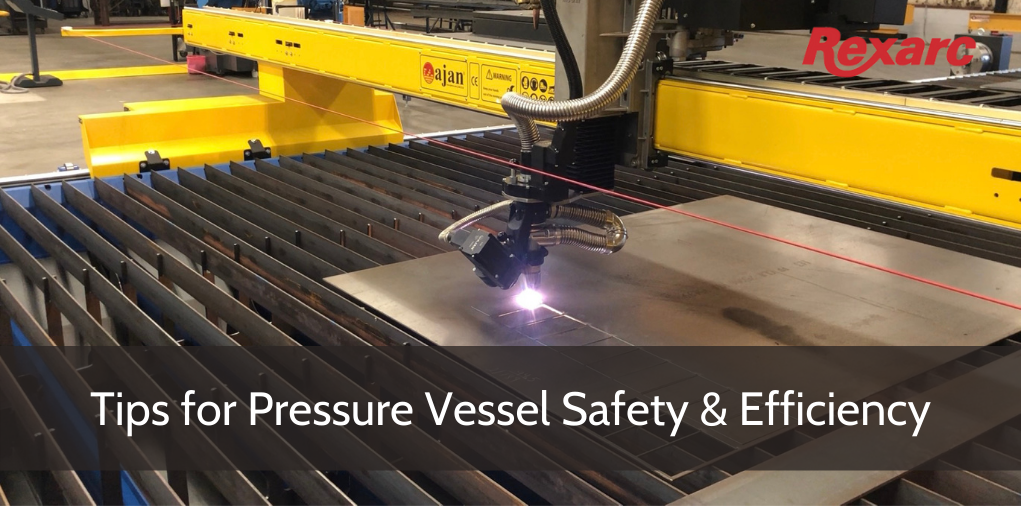Rexarc is currently open from 7:30 AM – 4:00 PM EST, Monday – Friday. Read More
Rexarc is currently open from 7:30 AM – 4:00 PM EST, Monday – Friday. Read More

Safe and efficient operation of your pressure vessel can be interrupted by poor materials and weld choices. Making good decisions from the earliest stages of specification and design will ensure the efficient performance expected.
In the engineering phase, be sure to consider or share all factors that could affect the operation of your vessel. There are obvious factors that can impact pressure vessel performance. For example, the chemicals in the tank can be corrosive, damaging the tank materials. Other factors, such as operating temperatures and physical environment, can also be at play in tank deterioration.
Your fabrication partner can help you determine the best construction materials and welds. Also, it is helpful to have a basic knowledge of materials, especially stainless steel, one of the most popular tank materials.
Stainless Steel Options
Many different materials are available for pressure vessels such as plastic, and various grades of steel. Stainless or coated stainless steels are frequently chosen for durability and value. Stainless steel is readily available, easy to use in fabrication, and stands up to temperature and environmental pressures well. However, making the proper choice requires some knowledge of each alloy’s properties.
We will work with you to understand how and where you’ll use your pressure vessel for the best possible results. Stainless steel alloys include:
There are many factors to consider when choosing a stainless steel for your pressure vessel project. Functionality, contents, environments all play a role. Working with your fabricator to choose the correct grade of stainless steel will help ensure the results you seek.
The materials forming the tank are important as well as the process that holds everything together.
Welding Processes Key to Pressure Vessel Performance
Having a basic understanding of those processes can help you have informed conversations with your fabricator and if engineering the vessel, choose the proper procedure for your needs.
Welding options include:
There are also typical uses for each type of welding:
GMAW/MIG welding is typically used for thinner sheet metals. It is the weld type of choice for stainless steel and aluminum.
Arc welding (SAW and SMAW) can be used on a variety of metals and allows. Most commonly, it is used for carbon steel, stainless steel, cast iron, ductile iron, and high and low alloy steel. This technique also can be used on aluminum, and nickel and copper and their alloys.
GTAW/TIG welding is used on non-ferrous metals such as aluminum, magnesium and copper alloys. It also is used on stainless steel.
Each process has its role and should be used to maximize effectiveness. Work with your fabricator to choose the process that works for your project.
Knowledge = Success
Construction materials affect the life of your pressure vessel. Knowing how those materials will react with chemicals, temperature, pressure, and environmental impact will help you make informed decisions. Certain welding processes work best for the tank construction materials and usage.
In your buying research, be sure to understand the materials and welding processes employed by fabricators. A little knowledge will help you to successfully achieve your project.

We are a one stop shop from custom vessel production to full skidding, plumbing and instrumentation.

We stand by our processes and communicate with you on your project status as much or as little as you would like.

We continually reinvest in our people, business, and equipment technology to ship quality products on time.
